A whole year has gone by, filled with smartwatches. Apple makes them. Google’s software powers them. Sony, Samsung, Asus, Motorola, Pebble. Fossil. Tag-Heuer. It’s starting to come from everywhere: Everyone wants to put a high-tech thing on your wrist.
There’s a problem, though: none of them feel necessary, or even necessarily desirable. In fact, most of them don’t even make a compelling case to justify their price tag.
When people ask me what smartwatch to get (or if they should even get one), I pause, make a noise and probably looked pained. These devices are toys so far. They’re intriguing, and sometimes useful, sometimes cool. But their advantages come with drawbacks. Each one is a compromise. It depends on how you want your compromises to feel, and whether or not you’re ready to drop several hundred dollars on one of these experiments now…or wait a bit.
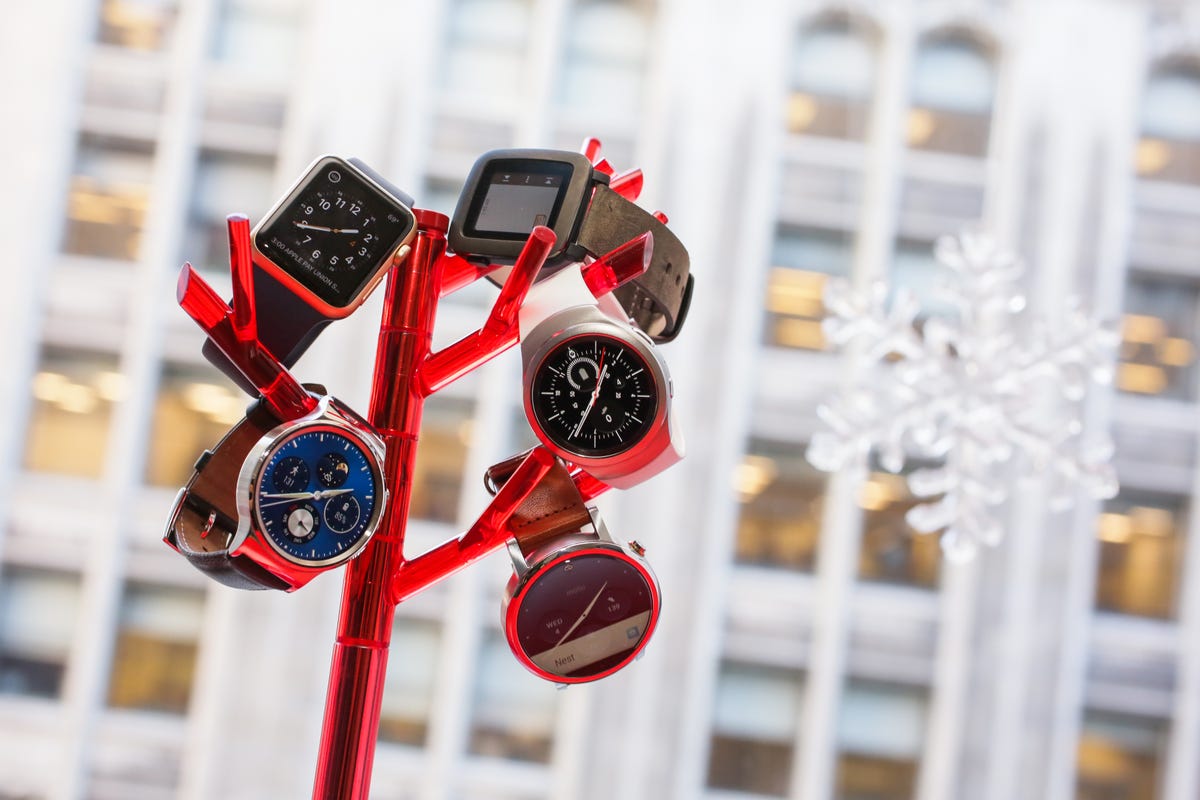

Smartwatches…even the best have a lot of flaws.
Sarah Tew/CNET
Smartwatches won’t wow you like virtual reality does. They won’t be the thing you can’t live without, like smartphones. They are annoying to perpetually charge (even the best ones last about 10 days at most). So then, what’s the point?
That, ultimately, is the problem for now. I like wearing a smartwatch, and I find it useful throughout my day. I also like following the technology as it evolves, and I’m fortunate enough to be getting loaner watches that I can wear for weeks or months at a time. That’s my job. But would I spend upwards of $250 or more of my own money on one of these things? I might, just for the novelty: After all, I bought an iPod Nano for a watch years ago. But I can’t say you’ll want to do the same. And that’s why no smartwatch has cracked a 4-star rating on CNET to date.
That said, many of these watches have some great features, and some do much better with certain tasks than others. To that end, I’m doling out my smartwatch awards for 2015. And hoping that, in 2016, we may finally see one watch that could combine all of these winning features into one recommendable product.
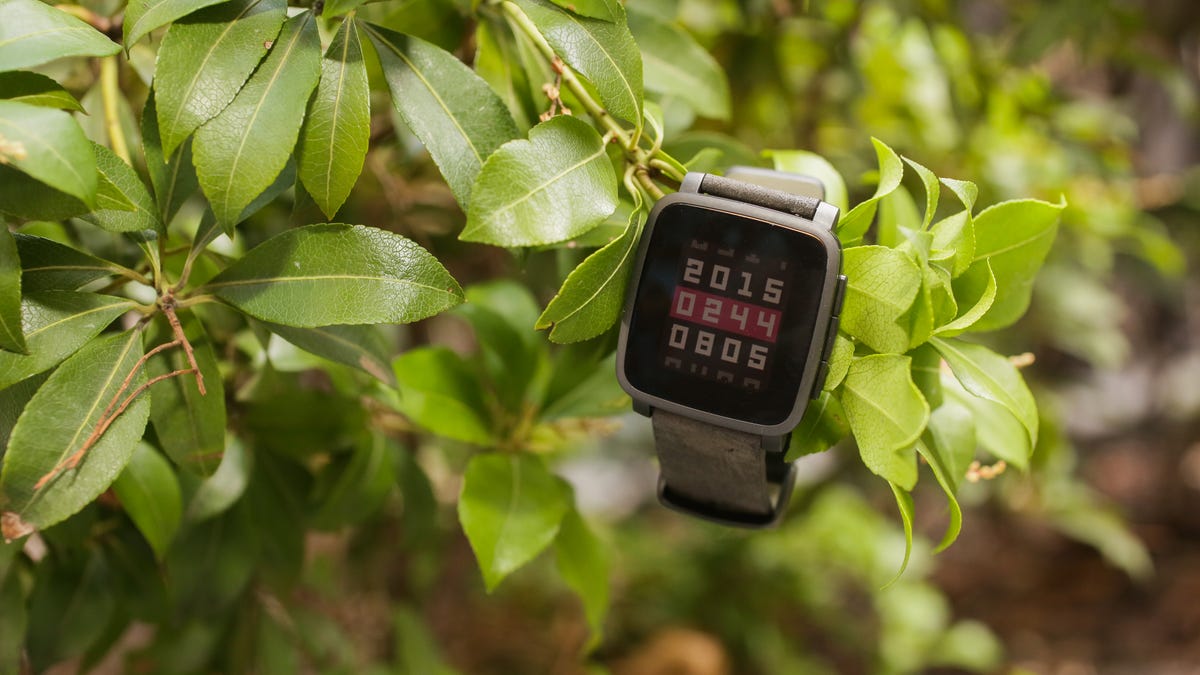

Pebble Time Steel: always-on, long battery.
Sarah Tew / CNET
Best at being a regular watch… almost: Pebble Time Steel
The Pebble Time Steel understands that people don’t like charging watches. It understands that we want an always-on screen. It understands that many people like showering with their watches, too. The Time Steel gets notifications and runs some basic apps, as well as works with lots of phones across the iPhone and Android spectrum. But its always-on reflective screen, water resistance and longer battery life are all what win me over most. And the fact that Pebble just added some basic step counting and sleep tracking sweetens the deal even further.
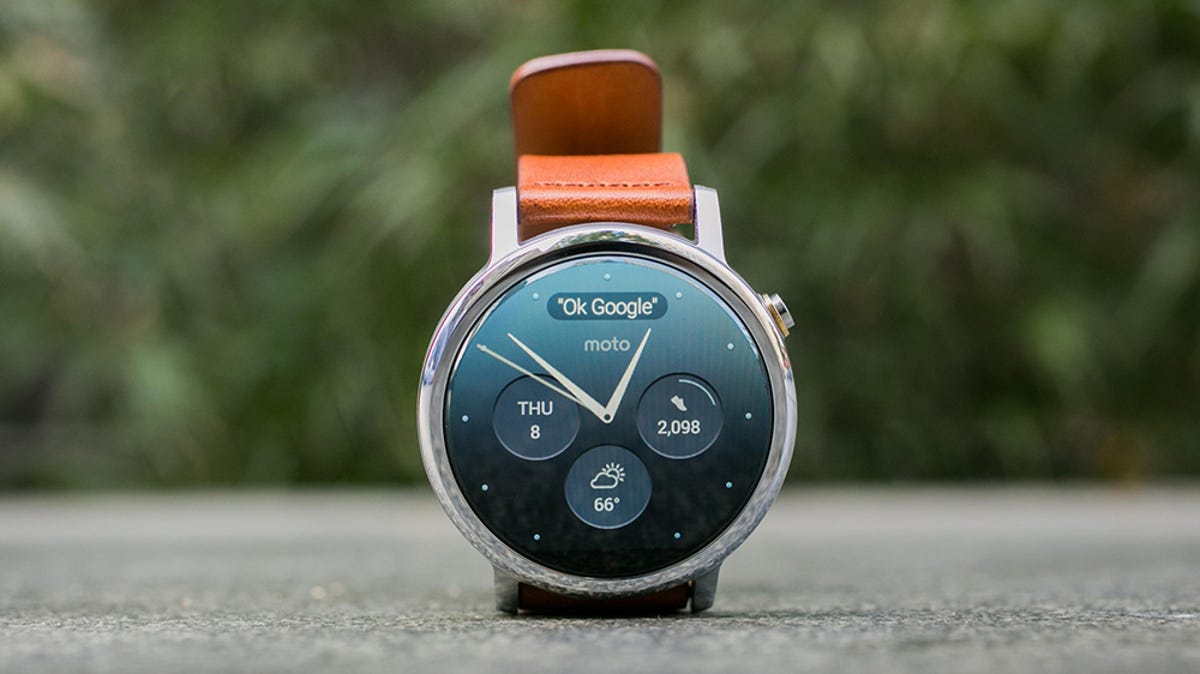

Moto 360’s new design is clean and modern.
Sarah Tew/CNET
Best-looking from a distance (tie): Samsung Gear S2, Moto 360, Huawei Watch
They’re round, sleek and seem like real watches. People stop and ask what they are when I wear them. If you’re trying to just wear a cool-looking watch, these smartwatches do the trick. The Samsung Gear S2 also has a great rotating bezel and watchfaces that match its slick design. On the Moto 360, however, you’ve still got to forgive that flat-tire screen with a black slice cut out of it. (If it bothers you, Huawei Watch might be your thing).
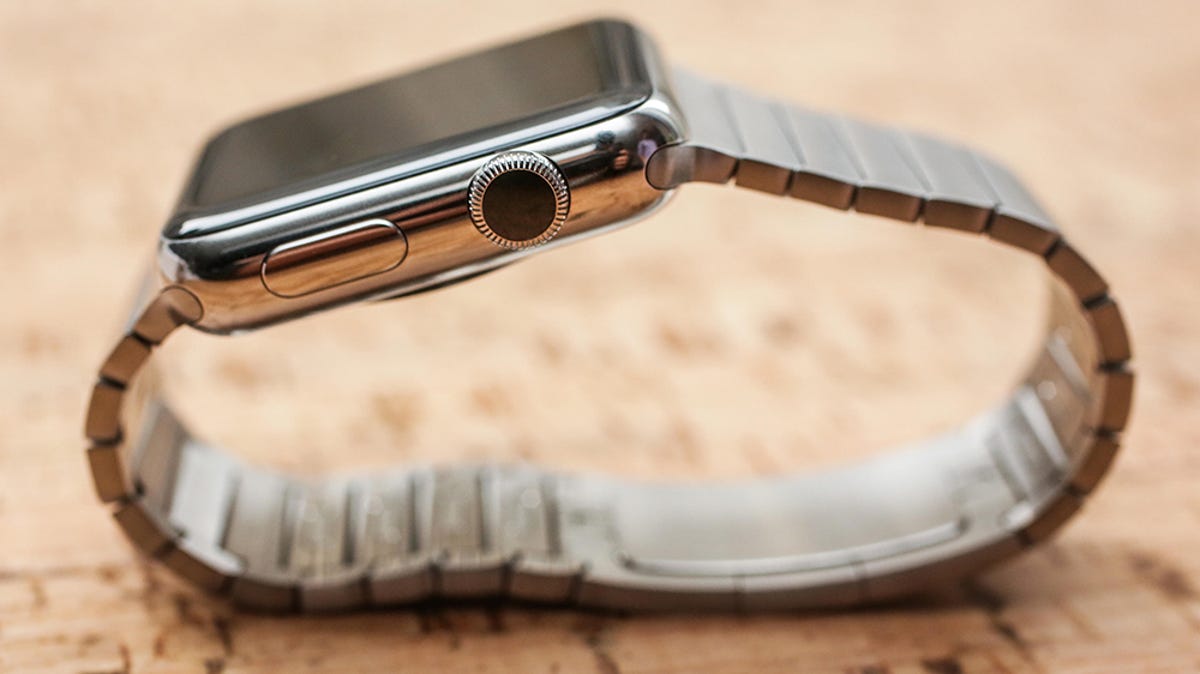

Apple Watch: all models are extremely well-built.
Sarah Tew/CNET
Best-feeling watch, with the best construction: Apple Watch
Apple’s finish and design skills are extraordinary, and the Apple Watch — from its cool watchbands to its perfect little spinning Digital Crown — feels better to me than any other smartwatch. The sport and steel models both are great to wear, and feel invisible on my wrist. I consider it a watch that feels better than it looks.
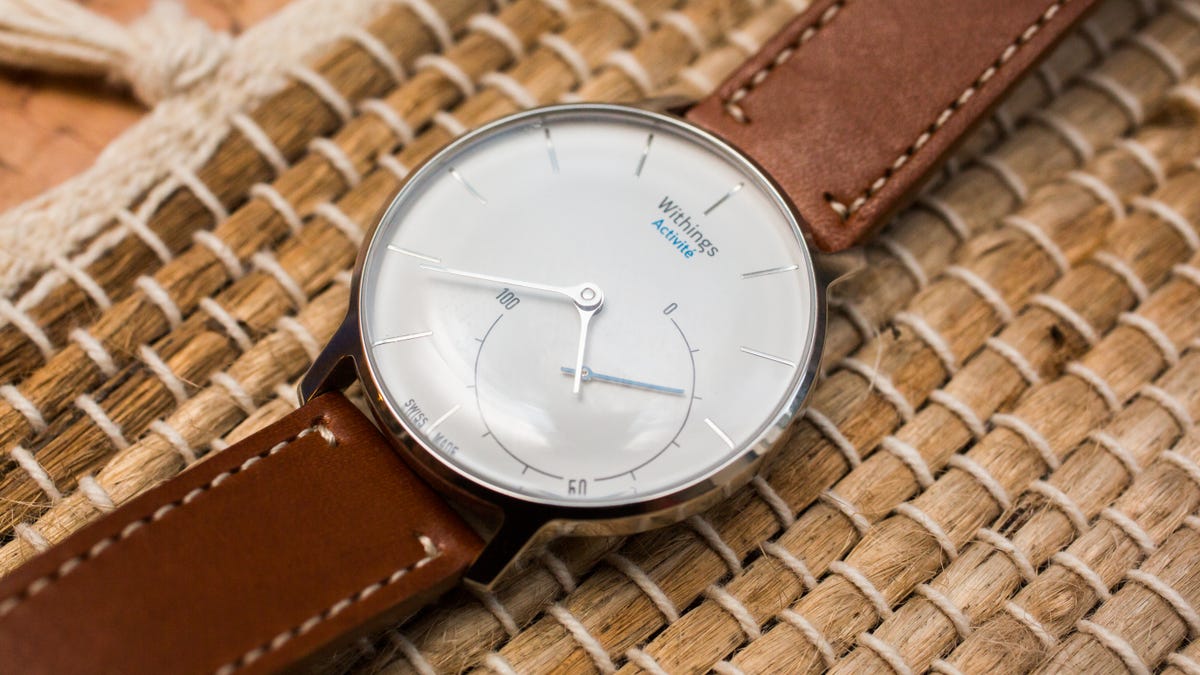

The Withings Activite: a traditional watch with benefits.
Sarah Tew/CNET
Best everyday watch with a bit of fitness smarts: Withings Activite
There are watches that just do a bit more. Call them dumb smartwatches, watches with benefits, slightly-smart watches, or “connected watches,” but the Withings Activite, available in several price-tier design flavors (Pop and Steel both work the same) is a prime example. This isn’t a smartwatch at all, really: it’s a fitness tracker. It’s also basic analog-style watch with a digital underpinning. And it tracks steps and sleep automatically…plus it vibrates. It’s easy to wear and — with a six-month or better battery — doesn’t need charging. It’s the most laid-back, good smart wearable of the year.
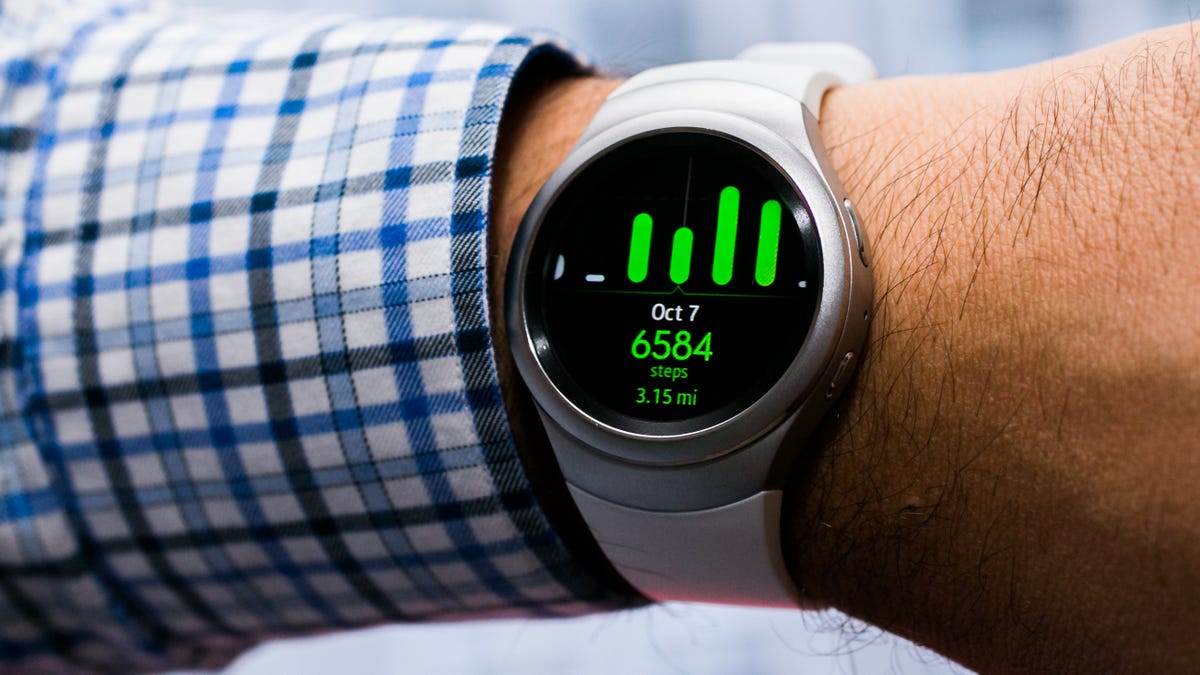

Samsung Gear S2: surprisingly deep on fitness functions.
Sarah Tew/CNET
Best deeper fitness-tracking: Apple Watch, Samsung Gear S2
For running, workouts and other more complicated features, some smartwatches do a better job. Heart rate, targeted exercise logging beyond just step-counting, and the ability to tap into fitness apps that track laps, pace and more: all three of these watches do a fair job at being more active. None of them, however, are better than having a dedicated GPS-enabled connected running watch.
Best for communicating: Apple Watch
Most people I know buy smartwatches for either fitness tracking or getting messages on their wrist. I used to love Pebble for that feature. Now I think Apple Watch does a better job. Its slightly more discreet pop-up messages stay out of sight until I can glance at them, and I can slide my finger down to peek at the rest. Responding is easy, too. I like its smoother, neater style better than Android Wear, which feels clunky. And its voice calling works surprisingly well because its microphone is so good.
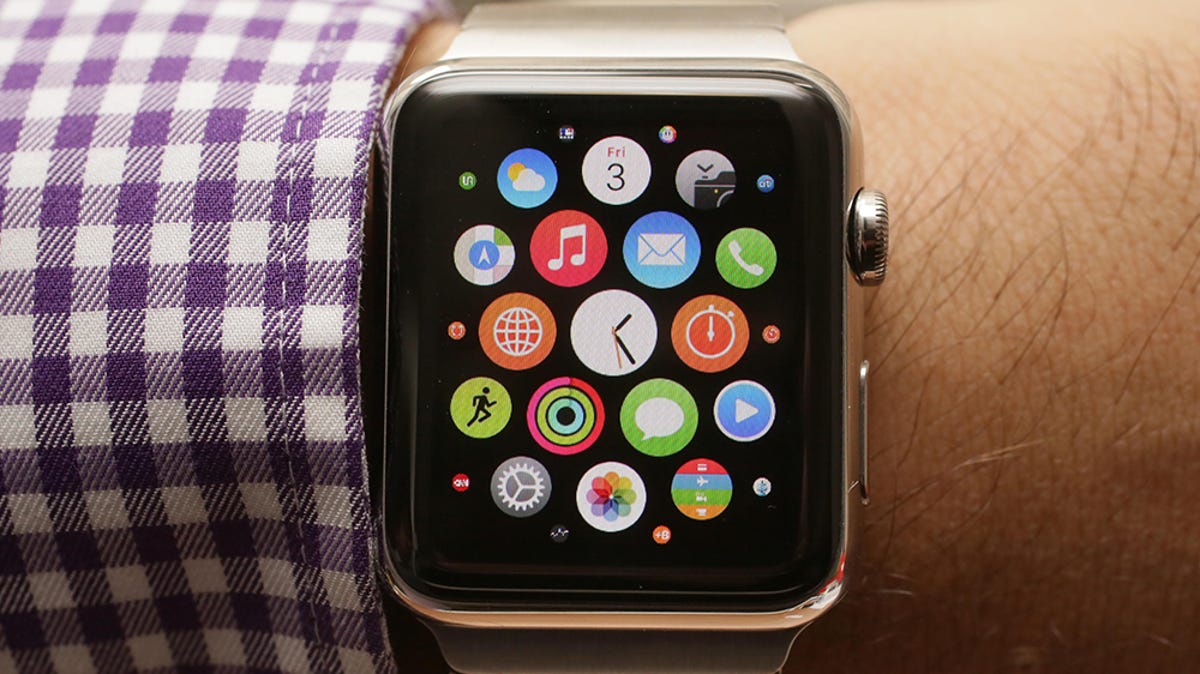

Communicating with Apple Watch is easier than on several of the other platforms.
Sarah Tew/CNET
Best apps: I don’t use most of them, here’s why
There are thousands of apps on smartwatches, and I avoid most of them. A friend who just bought an Apple Watch asked me to demonstrate a few. I loaded a sports app, and it took so long I realized we could have checked the phone for scores instead. Apps don’t load as quickly on smartwatches, they are harder to navigate and they’re just mostly awkward. After 10 seconds of fiddling on my watch, I’m grabbing for my phone…unless I’m somewhere where I left my phone across the room or upstairs. My favorite apps are sports ones, messaging apps like Facebook Messenger, fitness or health apps like Withings or Runtastic, weather apps (Dark Sky) and banking apps. The rest, unless they’re baked into the watch software, I tend to avoid.
My favorite things to do on a smartwatch
Pay for things. Track runs. Peek at my heart rate. Check weather. Make sure I didn’t miss any messages. Answer phone calls, when my phone’s out of reach. Get turn by turn directions on my wrist to buzz me while driving, so I can remember whether to exit soon or not. Check whether I set the alarm. Lock my house alarm. Adjust the thermostat. I use smartwatches for a lot of things…and I’m starting to get used to having the extra wrist support when I’m living my life. Smartwatches are starting to become a bit more like wrist remotes and tiny life-scanners than they were a year ago, thanks to some apps. But, I’d rather use a watch to receive things I need to know about than use it to proactively do things which I can’t end up easily controlling…like, for instance, sending someone a text message.
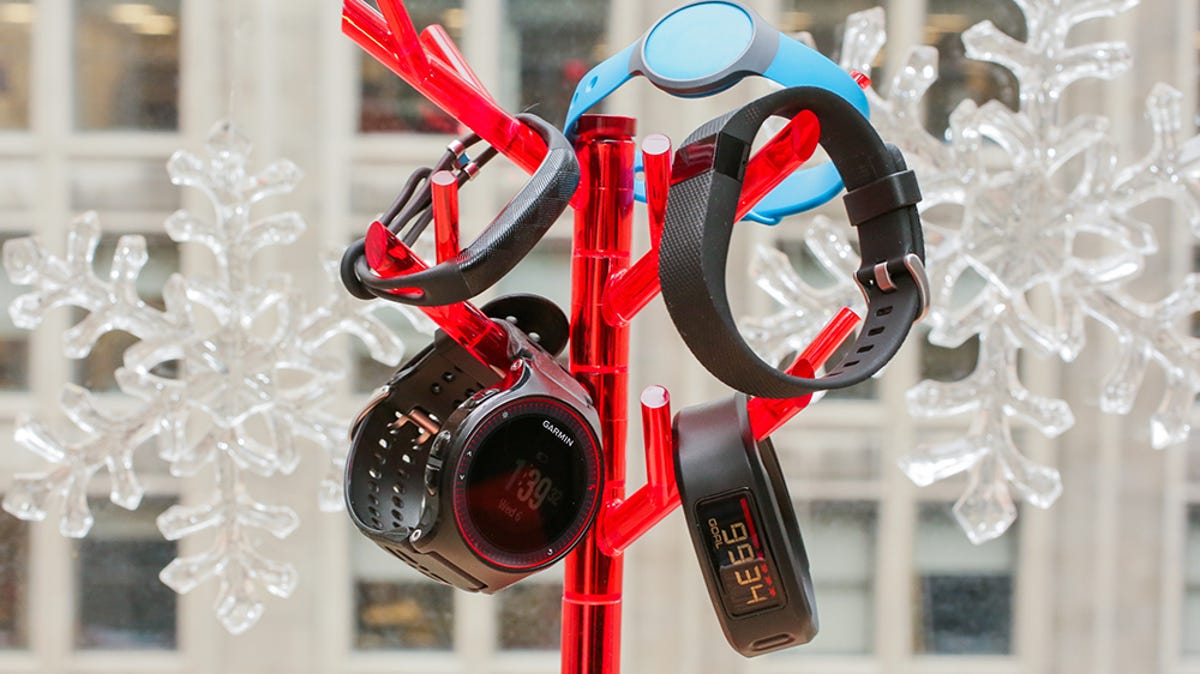

Fitness trackers and smartwatches: blending together into a blur.
Sarah Tew/CNET
What about fitness trackers?
What about them? There are more successful fitness bands than there are smartwatches. The biggest players in wearable tech right now, according to research firm IDC — Fitbit, Apple, Xiaomi and Garmin — are mostly fitness-tracker makers. And the Apple Watch positions itself as a Fitbit contender in most of its advertising. They’re purpose-built, and in 2015 they did the job pretty well. Heart rate-enabled bands abound, and they’re better than they used to be. More bands get notifications and buzz for alarms, too. They’re cheap enough that getting a basic one doesn’t feel like a major investment. Fitbit Charge HR is the best of the bunch, but few fitness trackers really seemed to leap up and impress with new ideas this year.
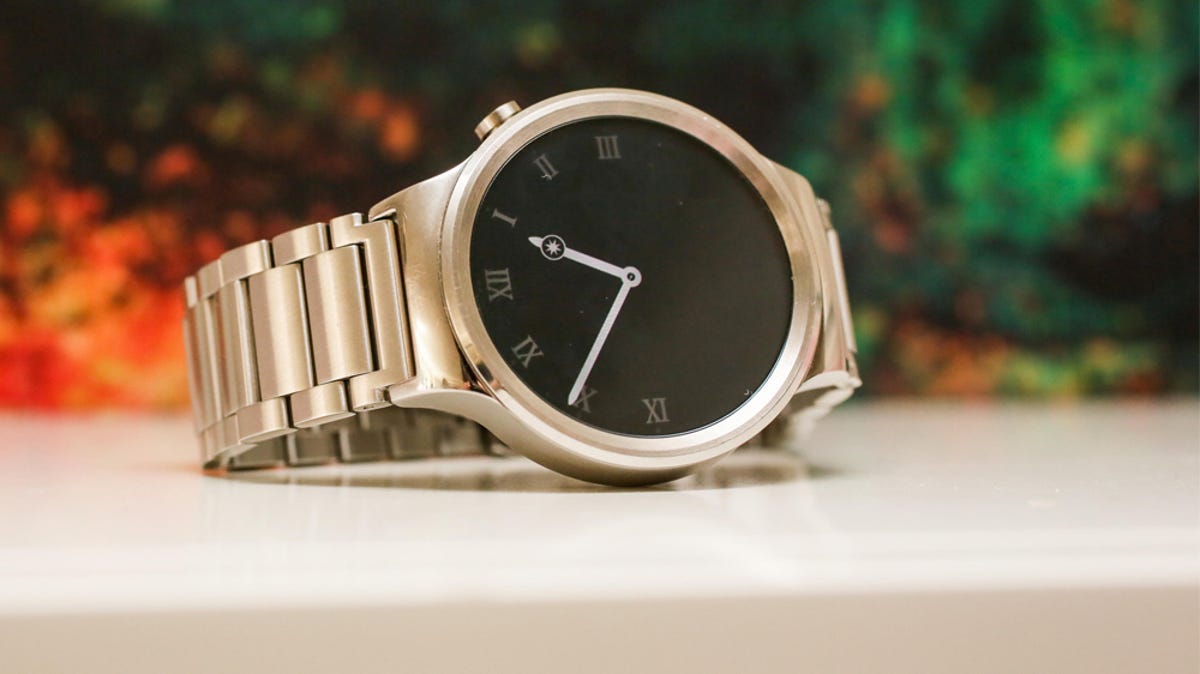

Huawei Watch: one of many Android Wear watches that look nice from the outside but all have mediocre software inside.
Sarah Tew/CNET
Where do we go from here?
More people are buying smart wrist-things than ever before. But a lot of people I know wear them and stop using them, too. Smartwatches have become an intriguing but also somewhat boring product landscape, all of a sudden — compared to the white-hot super-hype of the Apple Watch debut, all these watches have begun to blend together, and offer increasingly similar features.
Watches need better batteries, and they need to keep looking better. They need to do more, and do it more intuitively. Smartwatches need to connect to more things beyond the phone, and function well on their own, too. Every major player in smart wearables will be back next year with another round of ideas, and they’re bound to mostly be better. Many will start standing alone, connecting with their own Wi-Fi and cellular antennas.
For all the Android Wear watches (and Android Wear software updates), Apple Watch apps and endless watch companies announcing smartwatches that we’ve seen this year, what I really want the most are better, simpler, longer-lasting watches. Watches we don’t have to babysit. Watches that aren’t as needy. Maybe, to some, that means just wearing a regular watch instead. I’d almost agree, but my wrist just buzzed and beeped: it’s a message I would have missed otherwise. I’m already hooked. But I can’t guarantee you will be…yet.



